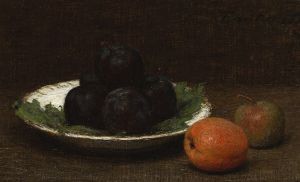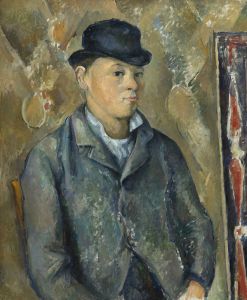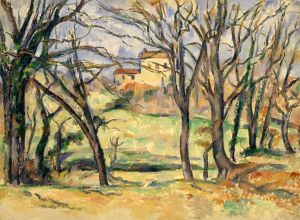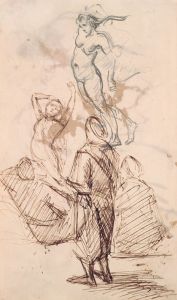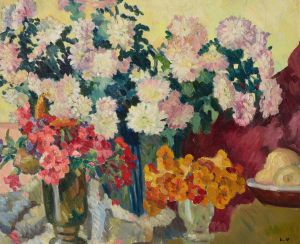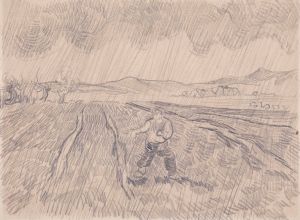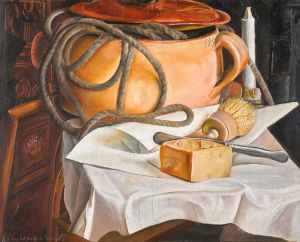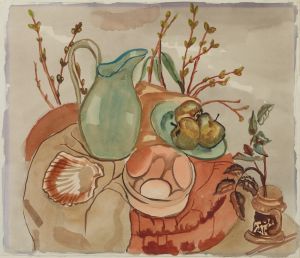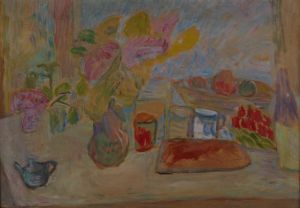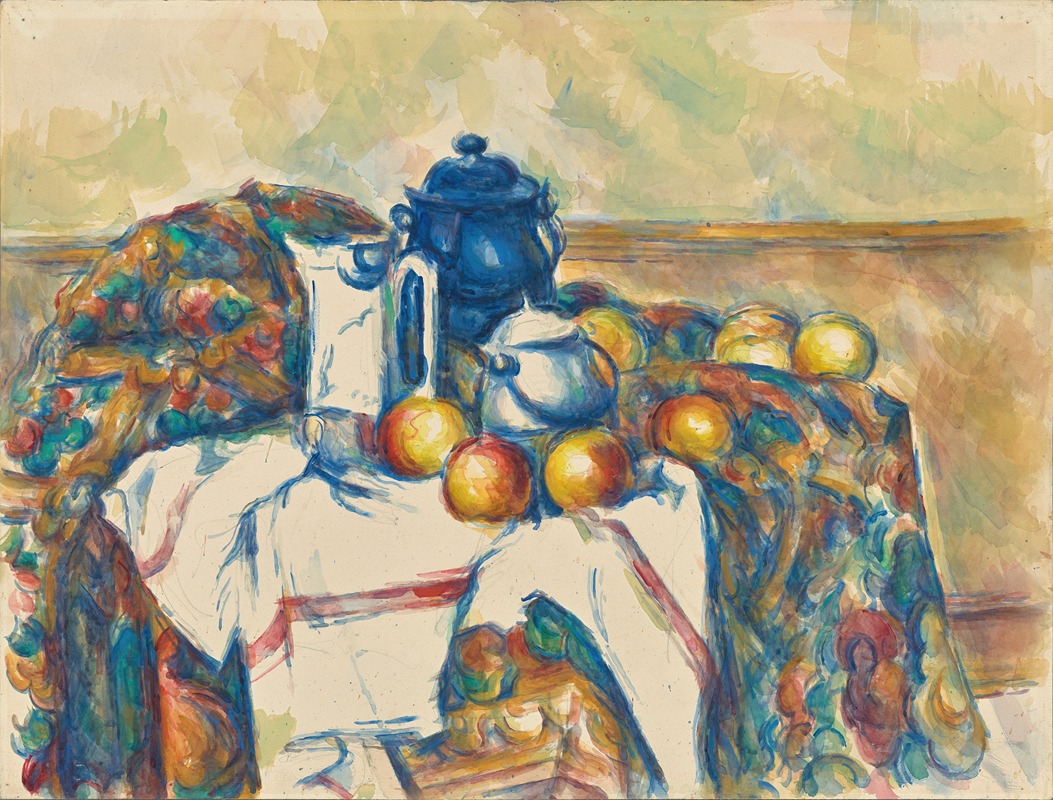
Still Life with Blue Pot
A hand-painted replica of Paul Cézanne’s masterpiece Still Life with Blue Pot, meticulously crafted by professional artists to capture the true essence of the original. Each piece is created with museum-quality canvas and rare mineral pigments, carefully painted by experienced artists with delicate brushstrokes and rich, layered colors to perfectly recreate the texture of the original artwork. Unlike machine-printed reproductions, this hand-painted version brings the painting to life, infused with the artist’s emotions and skill in every stroke. Whether for personal collection or home decoration, it instantly elevates the artistic atmosphere of any space.
"Still Life with Blue Pot" is a painting by the renowned French artist Paul Cézanne, who is often credited with laying the foundations for the transition from 19th-century Impressionism to 20th-century Cubism. Cézanne's work is characterized by his innovative approach to form, color, and composition, which has had a profound influence on the development of modern art.
Paul Cézanne was born on January 19, 1839, in Aix-en-Provence, France. He initially pursued a career in law, following his father's wishes, but eventually moved to Paris to pursue his passion for painting. In Paris, Cézanne became associated with the Impressionists, although his work diverged from theirs in significant ways. While Impressionists focused on capturing the fleeting effects of light and atmosphere, Cézanne was more interested in exploring the underlying structure and form of the subjects he painted.
"Still Life with Blue Pot" exemplifies Cézanne's distinctive approach to still life painting. In this work, Cézanne arranges a collection of objects, including a blue pot, fruit, and other items, on a table. His use of color is both bold and subtle, with the blue pot serving as a focal point that contrasts with the warmer tones of the surrounding objects. Cézanne's brushwork is deliberate and methodical, building up layers of paint to create a sense of depth and solidity.
One of the key aspects of Cézanne's still lifes is his exploration of perspective. Unlike traditional still life paintings, which often employ a single, fixed viewpoint, Cézanne's compositions frequently incorporate multiple perspectives. This technique can be seen in "Still Life with Blue Pot," where the objects appear to be viewed from slightly different angles. This approach challenges the viewer's perception and invites them to engage with the painting in a more dynamic way.
Cézanne's still lifes are also notable for their compositional balance and harmony. In "Still Life with Blue Pot," the arrangement of objects is carefully considered, with each element contributing to the overall structure of the composition. The interplay of shapes and colors creates a sense of rhythm and movement, drawing the viewer's eye across the canvas.
Throughout his career, Cézanne's work was met with mixed reactions. While some critics dismissed his paintings as unfinished or awkward, others recognized his innovative approach and the depth of his artistic vision. Today, Cézanne is celebrated as one of the most important figures in the history of art, and his still lifes, including "Still Life with Blue Pot," are regarded as masterpieces that continue to inspire artists and captivate audiences.
Cézanne's influence can be seen in the work of many subsequent artists, including Pablo Picasso and Georges Braque, who developed Cubism in the early 20th century. By breaking down objects into their geometric components and exploring multiple perspectives, Cézanne paved the way for these artists to further challenge traditional notions of representation in art.
"Still Life with Blue Pot" remains a testament to Cézanne's enduring legacy and his contribution to the evolution of modern art. Through his innovative techniques and unique vision, Cézanne transformed the still life genre and left an indelible mark on the art world.





